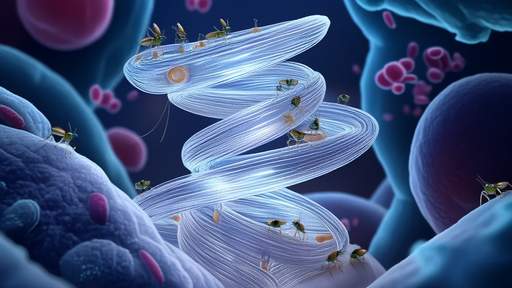Orange cats, often referred to as ginger kitties, have long been admired for their striking appearance and, among cat owners, their distinctive personalities. Known for being particularly friendly and feisty, these felines have a unique genetic makeup that sets them apart from other cats. A recent study published in the journal *Current Biology* has finally uncovered the specific DNA mutation responsible for their golden hue, revealing a genetic variant not found in any other animal.
The Genetic Puzzle of Orange Cats
The uniqueness of orange cats lies in the unusual way they inherit their color. Scientists have known for decades that the genetic code for orange coloration is carried on the X chromosome. This explains why the vast majority of fully orange cats are male: males have one X and one Y chromosome, so any male cat carrying the orange trait on its single X chromosome will be entirely orange. In contrast, female cats, with two X chromosomes, need to inherit the trait on both X chromosomes to be completely orange, making it less common. Instead, most female cats with orange fur display patchy patterns, such as calico or tortoiseshell, which include black and white.
The Breakthrough Discovery
The study, led by Christopher Kaelin, a senior scientist in genetics at Stanford University, and Greg Barsh, a professor emeritus of genetics and pediatrics, has identified the specific DNA mutation responsible for the orange coloration. "This is a really unusual type of mutation," said Kaelin. The mutation is a small deletion of 5,076 base pairs on the X chromosome, which removes about 0.005% of the chromosome in a region that does not code for a particular protein. This deletion activates the nearby gene Arhgap36, which regulates an important hormone signaling pathway used by nearly all mammalian cells and tissues. The activation of this gene in pigment cells blocks the production of black pigment, causing the cells to produce orange instead.
The Research Process
To identify this genetic mutation, Kaelin spent a decade frequenting cat shows, collecting DNA samples from ginger-colored cats with cheek swabs. He compared these samples with feline genomes sequenced in the past five to ten years, identifying 51 genetic variations on the X chromosome shared by orange males. Of these, three were unique to orange cats. The critical mutation was a small deletion that activated the Arhgap36 gene in pigment cells, leading to the production of orange pigment.
The Implications of the Discovery
The findings not only explain the genetic origins of orange cats' distinctive coloration but also reveal new insights into a familiar gene. The Arhgap36 gene, previously not associated with pigmentation, plays a crucial role in the development of orange fur. This discovery suggests that the mutation likely occurred once during domestication and was selectively bred for, as evidenced by depictions of calico cats in Chinese art dating back to the 12th century.
The Broader Context
The study's findings have broader implications for understanding genetic mutations and their effects. Barsh noted that the research could help elucidate mutational mechanisms in general, potentially shedding light on genetic conditions in humans where no mutation has been identified. "Maybe the problem isn’t just that we haven’t located the mutations, but that we don’t understand all the ways that mutations can cause disease traits in the first place," he said.
Future Research Directions
Kaelin and his team plan to further investigate how a small deletion outside a gene can change the activity of a nearby gene. This research could provide valuable insights into the mechanisms of genetic mutations and their effects on various phenotypes in different animals. Additionally, the findings could serve as a tool in population genetics to trace the evolutionary history of domestic cats.
The Personality of Orange Cats
While the study provides a clear genetic explanation for the orange coloration, it does not address the anecdotal belief that orange cats have unique personalities. Kaelin and his colleagues have no evidence to suggest that the genetic mutation affecting coat color also influences behavior. However, the study's findings could inspire future research into potential links between coat color and behavior in cats.
The discovery of the genetic mutation responsible for the orange coloration in cats is a significant breakthrough in feline genetics. This unique mutation, found only in domestic cats, offers insights into the mechanisms of genetic inheritance and the role of specific genes in pigmentation. The study not only unravels a long-standing mystery but also opens new avenues for understanding genetic mutations and their effects on various traits. As researchers continue to explore the genetics of domestic cats, they may uncover even more fascinating aspects of these beloved animals, enriching our understanding of both feline biology and the broader principles of genetics.

By Daniel Scott/Jun 6, 2025

By John Smith/Jun 6, 2025

By Daniel Scott/Jun 6, 2025

By Emma Thompson/Jun 6, 2025

By Sophia Lewis/Jun 6, 2025

By Olivia Reed/Jun 6, 2025

By Joshua Howard/Jun 6, 2025

By David Anderson/Jun 6, 2025

By Emma Thompson/Jun 6, 2025

By Emily Johnson/Jun 6, 2025

By Samuel Cooper/Jun 6, 2025

By Emily Johnson/Jun 6, 2025

By Sophia Lewis/Jun 6, 2025

By Jessica Lee/Jun 6, 2025